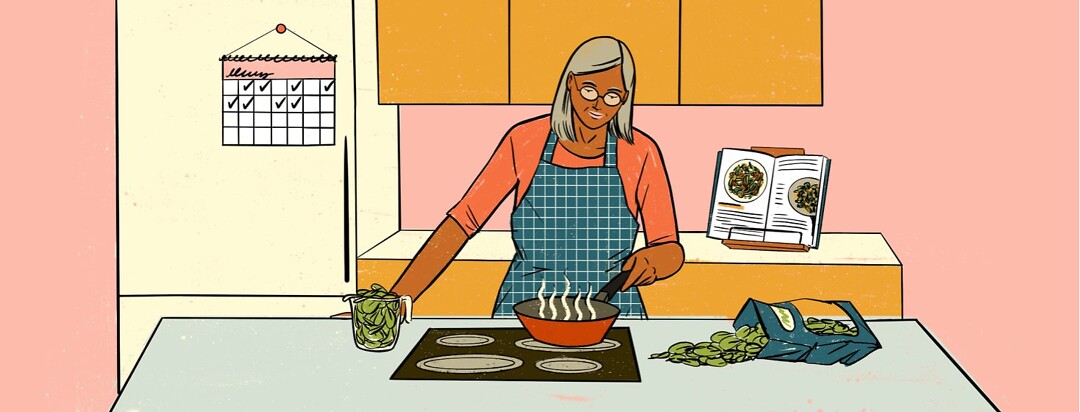How Can We Get SMARTer About Our Eye Health?
As COVID-19 eases up in Australia, it’s time for many of us to re-emerge from our shells, but that’s easier said than done.
Pandemic hibernation
At times, I feel as though I have sunk, in some ways, to the lowest common (comfortable) denominator. Not going out, not seeing friends or visiting family nearly as much, staying home and eating way too much comfort food – all of these have been a bit of a downward spiral. There’s not much impetus to tidy the house because no one is going to see it anyway. None of this is good, but it’s easy.
Yes, we have been lucky here, with nowhere near the suffering endured in other countries. I acknowledge that countless others don’t have the option of re-emerging from their shell. But life must go on if possible, and we must do the best we can. This life-in-a-shell is not the best I can do.
Struggling to emerge from my shell
I’ve half-heartedly tried to address a few of these things, but without much success. It seems to have become overwhelming.
How can we suddenly turn around and start to organize outings and visits, catch up with family and friends, and even get back to a healthy, not-so-comfortable diet? I even tried to take it in small steps, but my small steps have become minuscule, and some even have gone backwards. About the only things that have gone forward are the number on the bathroom scales and my skills using Zoom.
A SMART plan
Time for a new plan – a SMART plan. When I worked as a business studies teacher, we often talked about setting SMART goals. Usually, these were business goals, but I thought I could adapt this system to personal goals, and start making some forward progress.
Acting on a SMART plan
The acronym SMART stands for Specific, Measurable, Attainable, Relevant, and Time-based. Here’s a brief explanation and example relating to diet.
We’ve learned that diet is important in slowing the progression of macular degeneration. I often think to myself “eat more leafy green vegetables”.
But this is so vague. When will I buy them? What type? How much will I buy? How will I cook them? Here’s where SMART comes in.
Healthy eating SMART goals for macular degeneration
Specific
You need to say exactly what you want to achieve.
For example, "eat more greens" is too vague. You would say "buy and eat three servings of spinach per week" if that is your goal.
Measurable
What evidence will show that you have achieved this step.
If the spinach was bought and in the fridge at the beginning of the week, and you have eaten it by the end of the week, this is the measure of success.
Attainable
Is it reasonably possible to achieve this outcome during this timeframe?
Aim for a SMART goal that you feel is attainable, not too easy, and not too hard. Eating greens every day might prove a little difficult for some. You can increase the challenge later.
Relevant
Is this goal relevant to your overall aims and does it align with your values?
Yes, it certainly does align with the aim of including more leafy green vegetables in my diet in order to help maintain my sight.
Time-based
There should be a time element to your goal so that you can check on your success.
In this case it is a week. Some other goals might be based on a daily timetable.
Exercise
Another good intention of mine is “exercise more”. And it really is just an intention at the moment – it’s so vague and nothing specific is happening to achieve this. I decided to run it through the SMART plan, and this is the result.
Specific
Walk in the outdoors for thirty minutes five days of the week.
Measurable
Time my start and my finish and make sure it has been at least thirty minutes (otherwise, keep walking!) Mark on the calendar the days that I have walked.
Attainable
This is where I decided on five days a week. Walking every day can be unattainable and set you up for failure – other important things can get in the way.
Relevant
Walking as an exercise is relevant for all forms of health – eye health, cardiac health, and overall body health.
Timely
There is a dual time element on this goal – walk every day, and for thirty minutes.
Personalizing your goals
Each person's goals are different, but it’s best if they’re written down and put somewhere we can see them every day. Hopefully, with more structure to our plans, we’ll have a greater chance of achieving what we set out to do.
They say, “Work SMART - not hard." I think a bit of both might be the way to go.
Do you have any SMART goals for macular degeneration?

Join the conversation